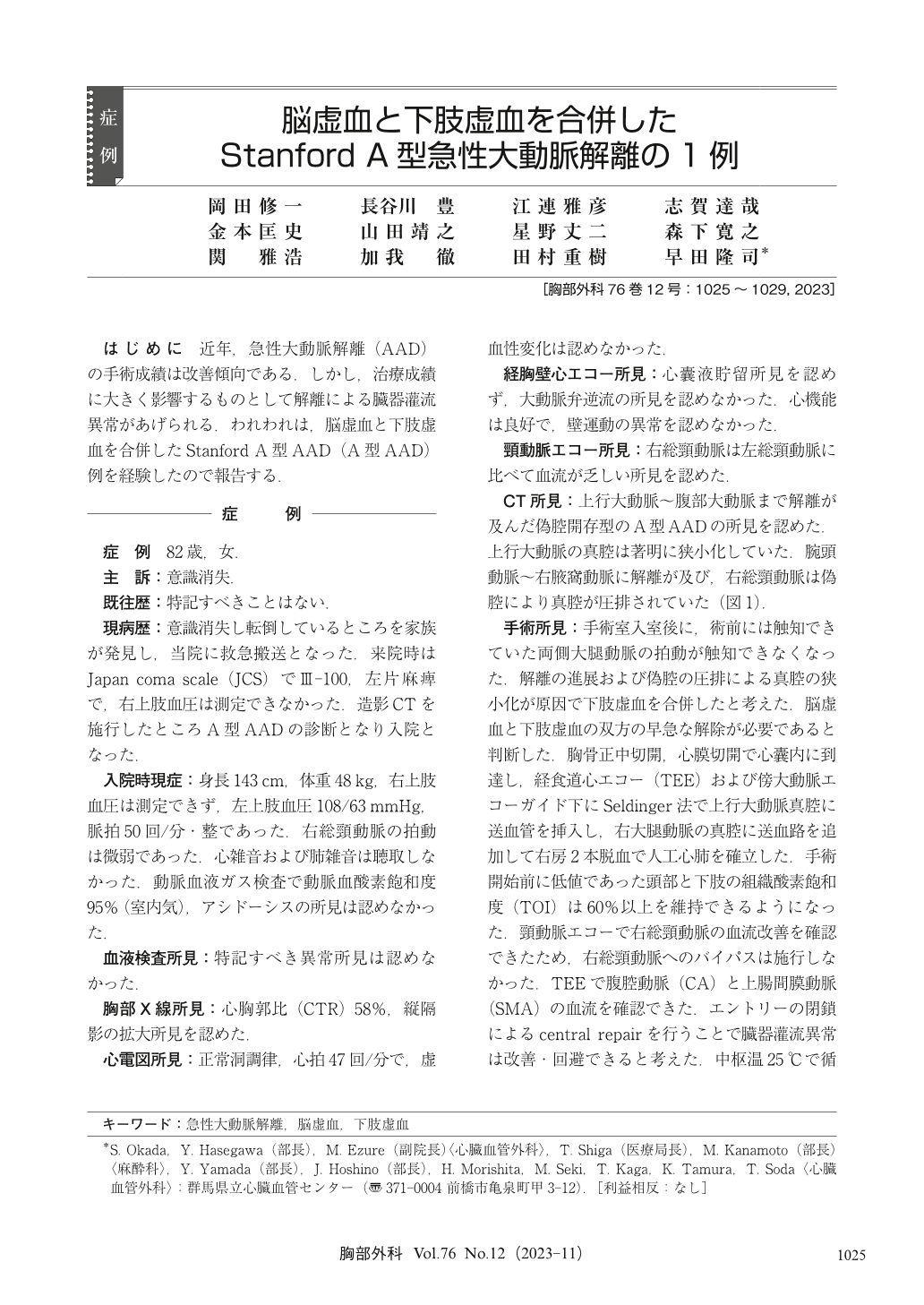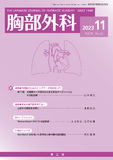Japanese
English
- 有料閲覧
- Abstract 文献概要
- 1ページ目 Look Inside
- 参考文献 Reference
はじめに 近年,急性大動脈解離(AAD)の手術成績は改善傾向である.しかし,治療成績に大きく影響するものとして解離による臓器灌流異常があげられる.われわれは,脳虚血と下肢虚血を合併したStanford A型AAD(A型AAD)例を経験したので報告する.
An 82-year-old woman suddenly developed chest pain and apoplexy. Computed tomography (CT) showed acute type A aortic dissection, the true lumen in the brachicephalic artery was severely compressed by the faulse lumen. Pulsation in the either leg was not detected during induction of anesthesia. We evaluated the cerebral blood flow and lower extremity blood flow using near infrared spectroscopy (NIRS) during the operation, tissue oxygenation index (TOI) was continuously monitored during the operation. Cardiopulmonary bypass (CPB) was established by puncturing the true lumen in the ascending aorta and bicaval venous drainage. TOI was returned to normal range by CPB. Although the central repair (ascending aorta replacement) was performed, leg ischemia persisted. We performed ascending aorta-bifemoral bypass. After the operation, leg ischemia disappeared and CT revealed patency of the bypass graft. Postoperative course was uneventful without deterioration of neurological function. She was discharged 49 days after the operation.

© Nankodo Co., Ltd., 2023


